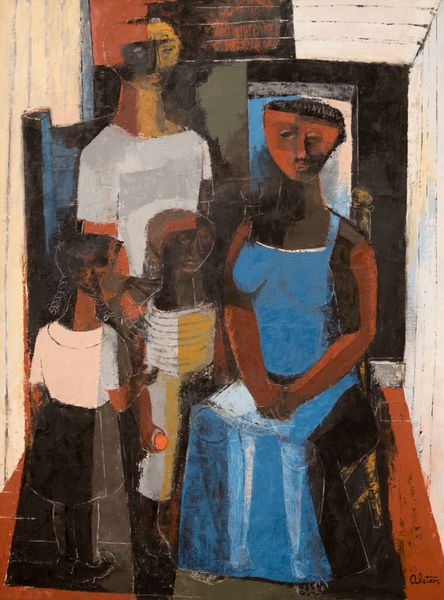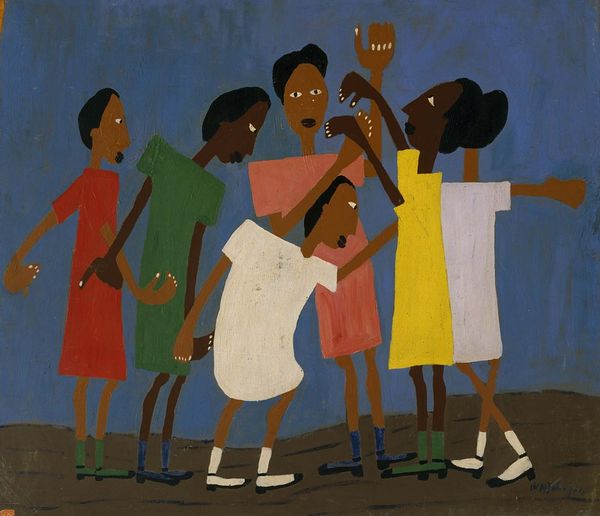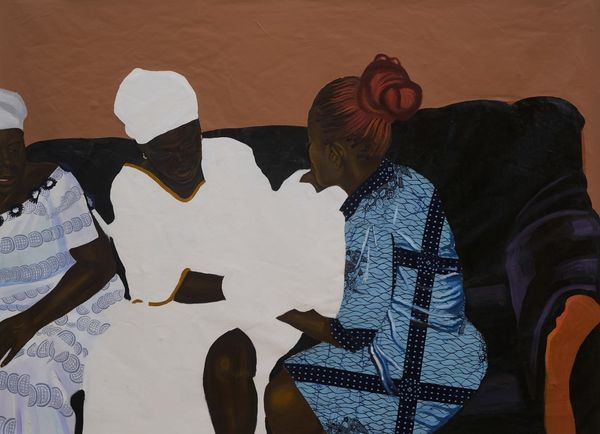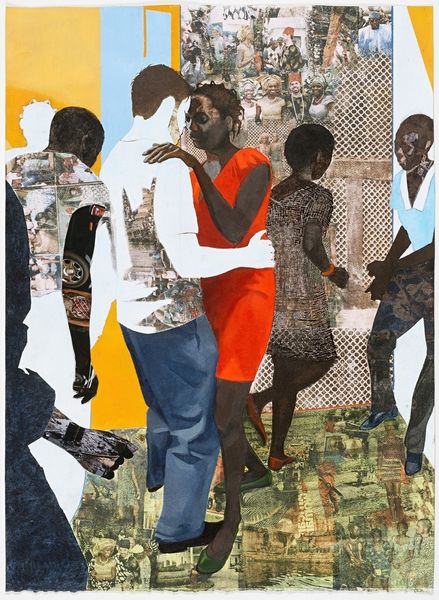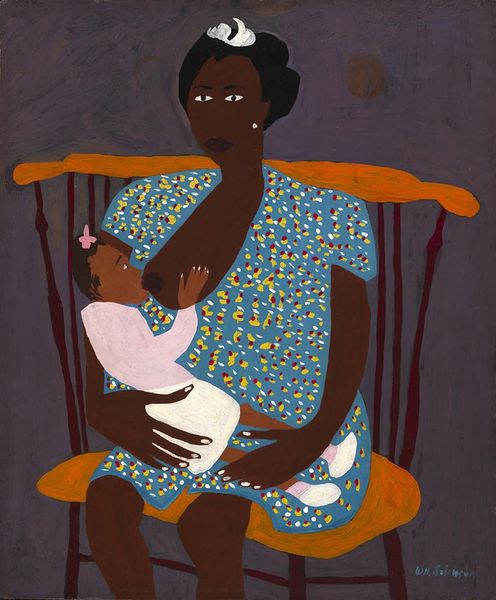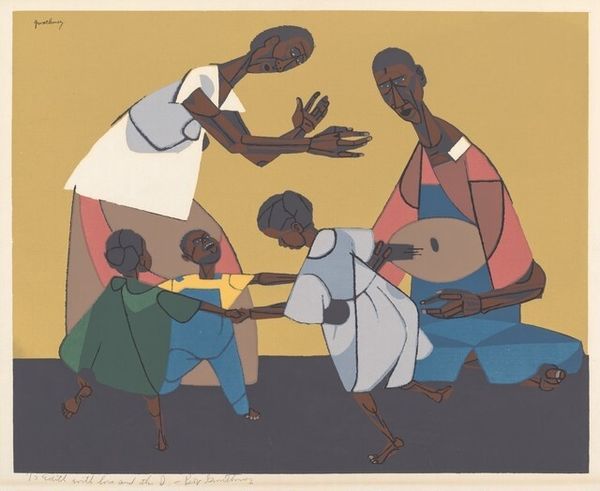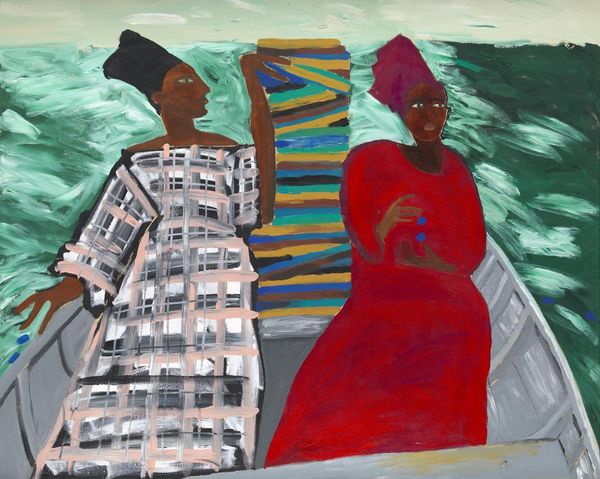
tempera, painting
#
portrait
#
narrative-art
#
tempera
#
painting
#
harlem-renaissance
#
figuration
#
line
#
modernism
Copyright: William H. Johnson,Fair Use
Editor: This is "Fright," a tempera painting created in 1942 by William H. Johnson. There's a raw, almost unsettling directness to this figuration. The large eyes of each subject pierce the viewer. What stylistic elements are at play here, in your opinion? Curator: The overriding characteristic is the reduction of form. Notice the simplification of the figures; the shapes are flattened, and the details are minimal. The high-keyed color and starkness of line against this pastel blue background work to heighten, perhaps even agitate, our gaze. Editor: Agitate, yes, exactly. The figures are reduced to flat planes of color and shape, like paper cutouts. It's a bold choice for a painting titled "Fright". Why this emphasis on form over realism, do you think? Curator: Consider the geometry in this Harlem Renaissance painting. The composition features thick contour lines and sharp geometric forms; for example, examine the angularity of the shoulders in relation to the curve of their heads, which enhances the two-dimensionality. What feeling does this angularity invoke in you? Editor: An abruptness, perhaps? Or a sort of unease created by those blunt, contrasting lines. How does this interplay with the painting’s explicit thematic title, “Fright?” Curator: Observe the subtle tension. Johnson appears to eschew modeling and shadowing effects, replacing those aspects of representation with a stark planar treatment, in tandem with an abbreviated approach to linear contour. This pushes the formal qualities of painting to the forefront, which gives greater compositional authority. In your estimation, does that increased visual authority create greater emotional resonance? Editor: That's insightful. Initially, I was preoccupied with the "fright," but now I see that Johnson uses formalism to guide my reading. It encourages a deeper response. Curator: Indeed, we can view how the abstract qualities support the painting’s affect.
Comments
No comments
Be the first to comment and join the conversation on the ultimate creative platform.




